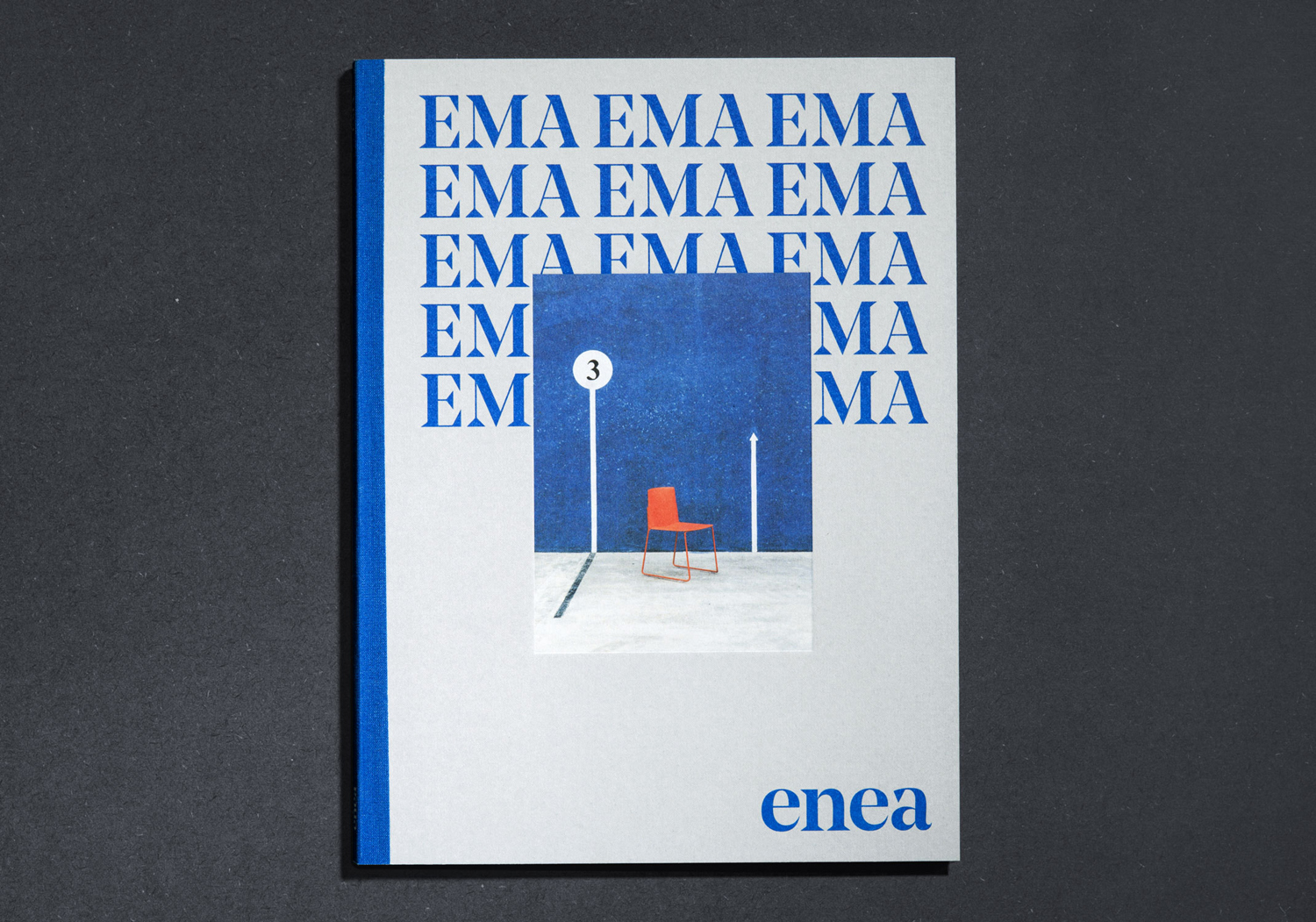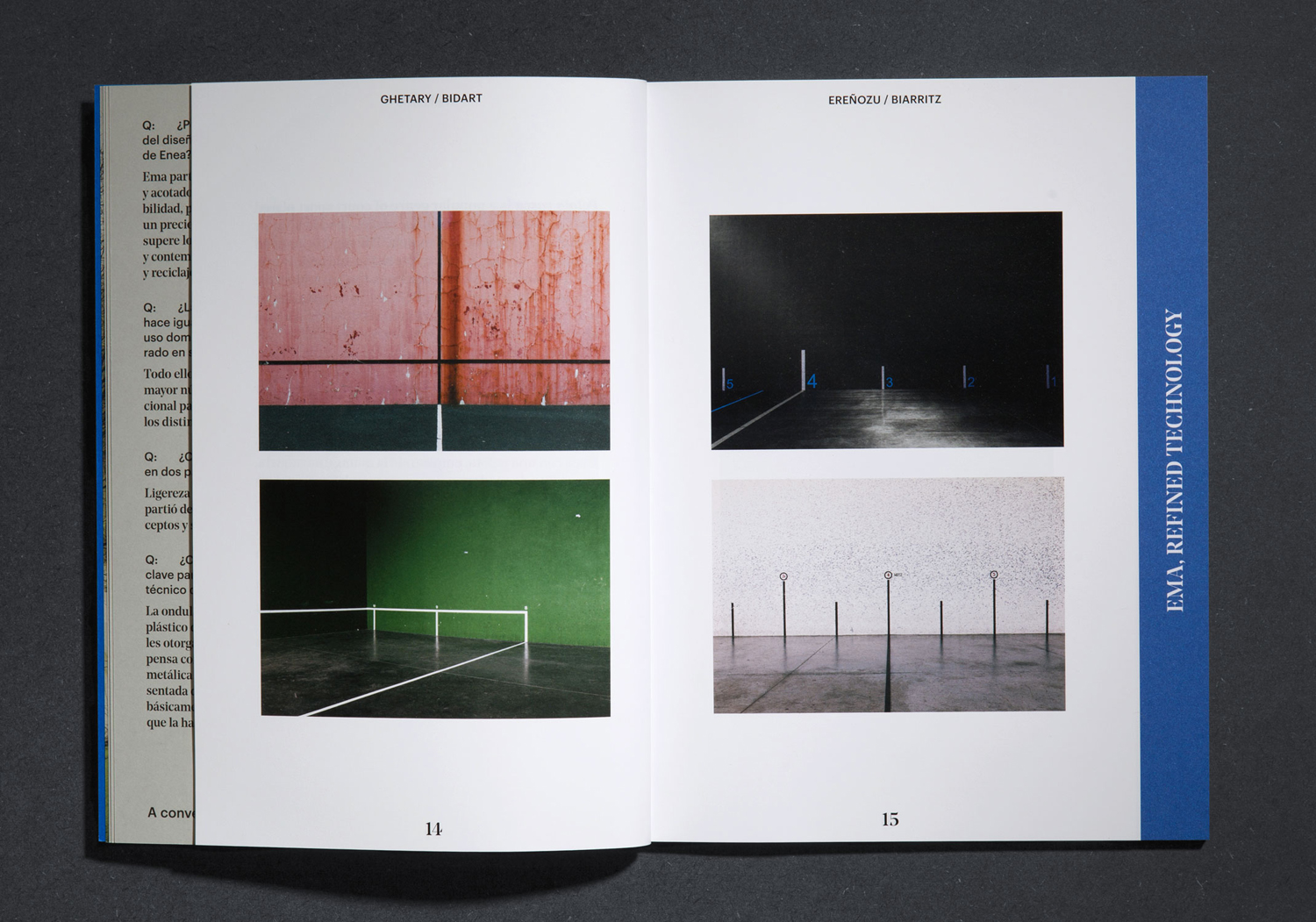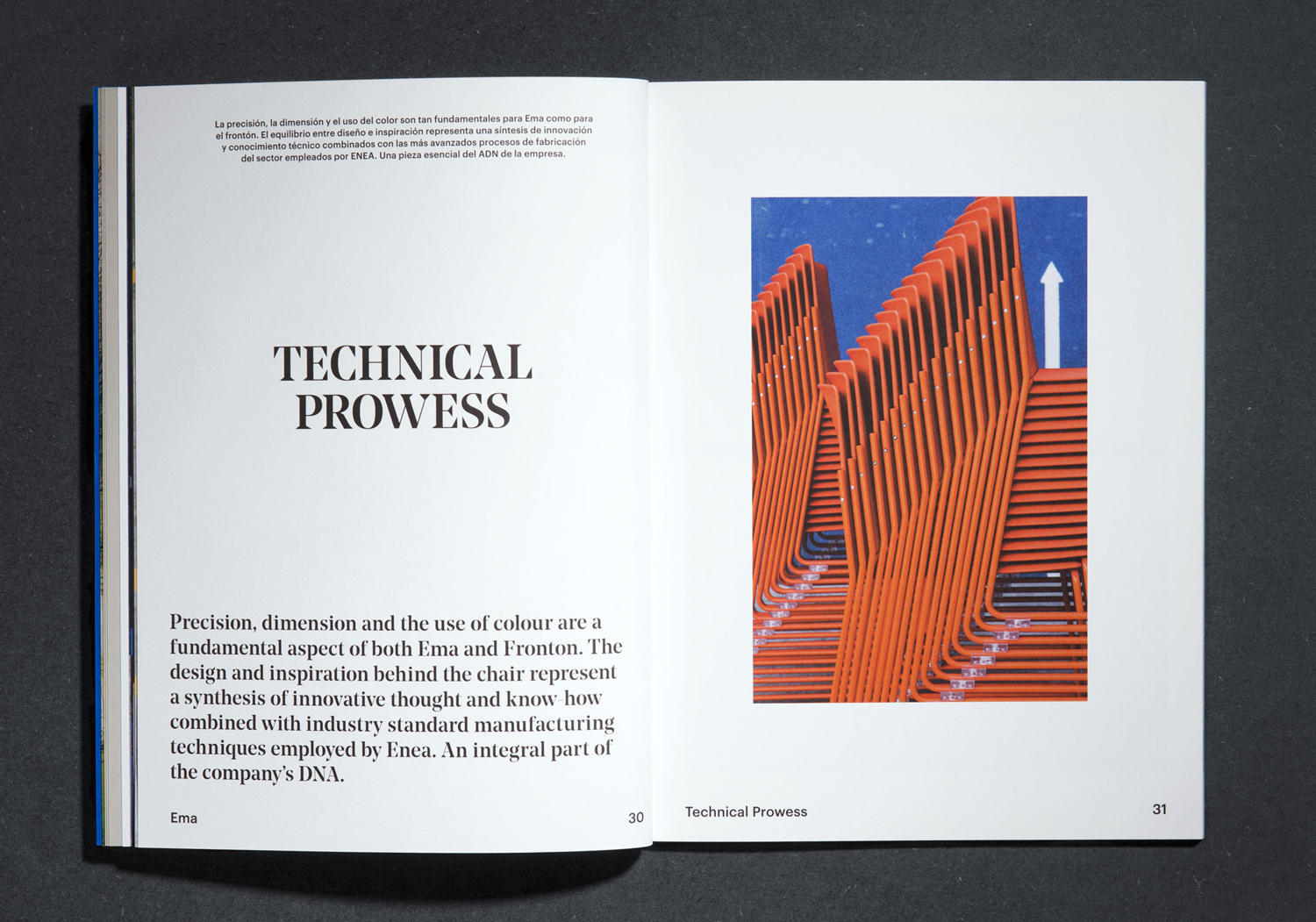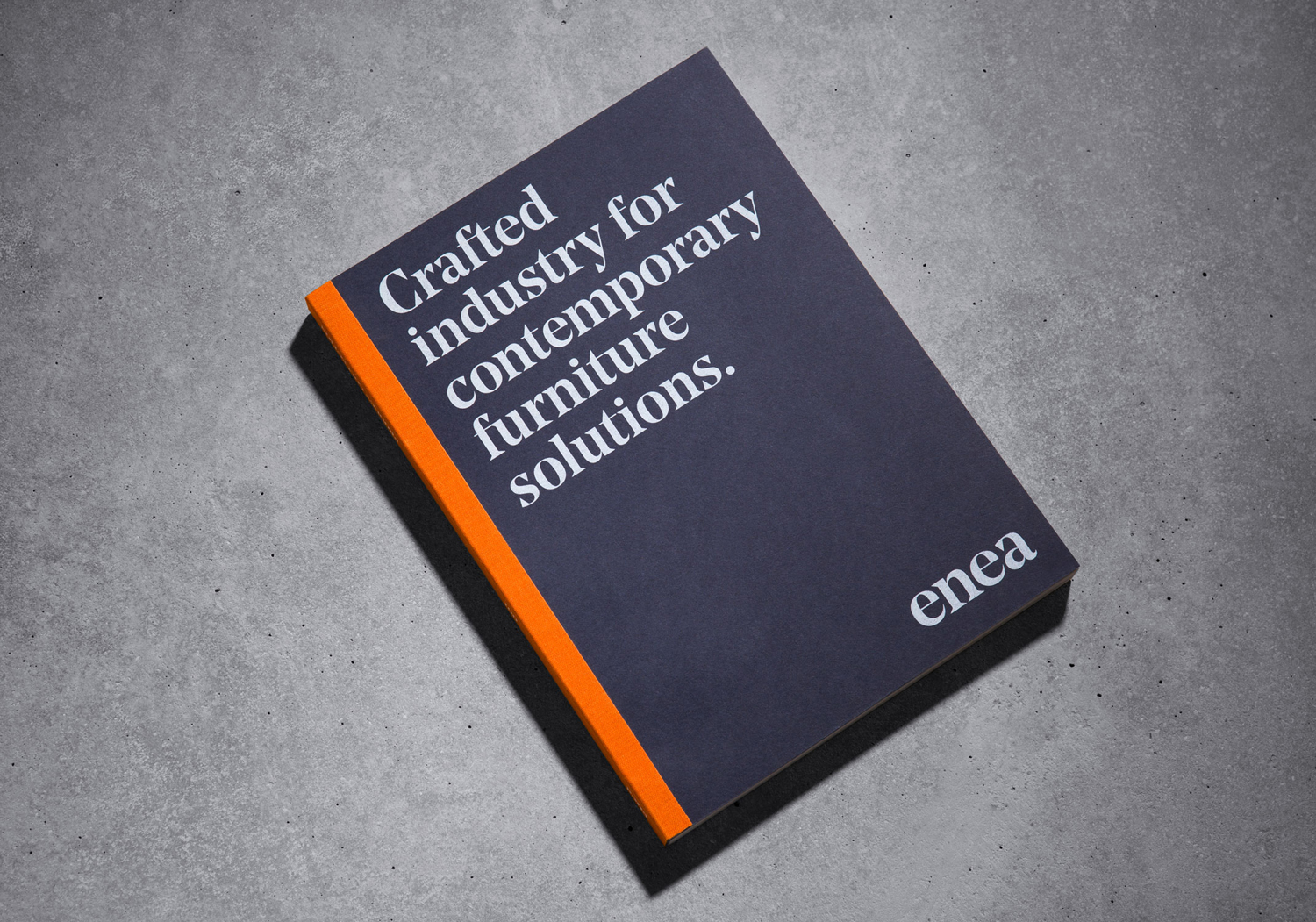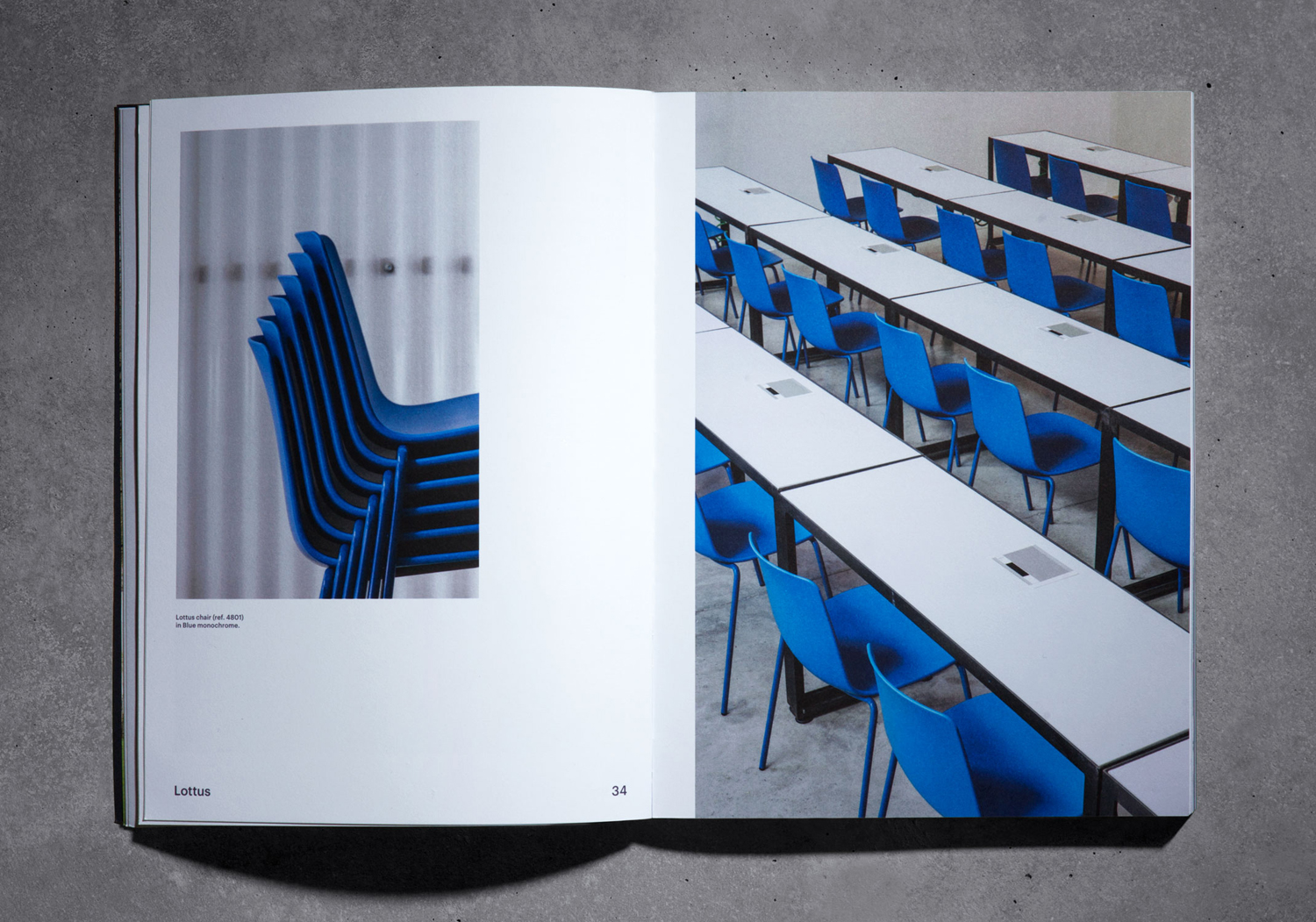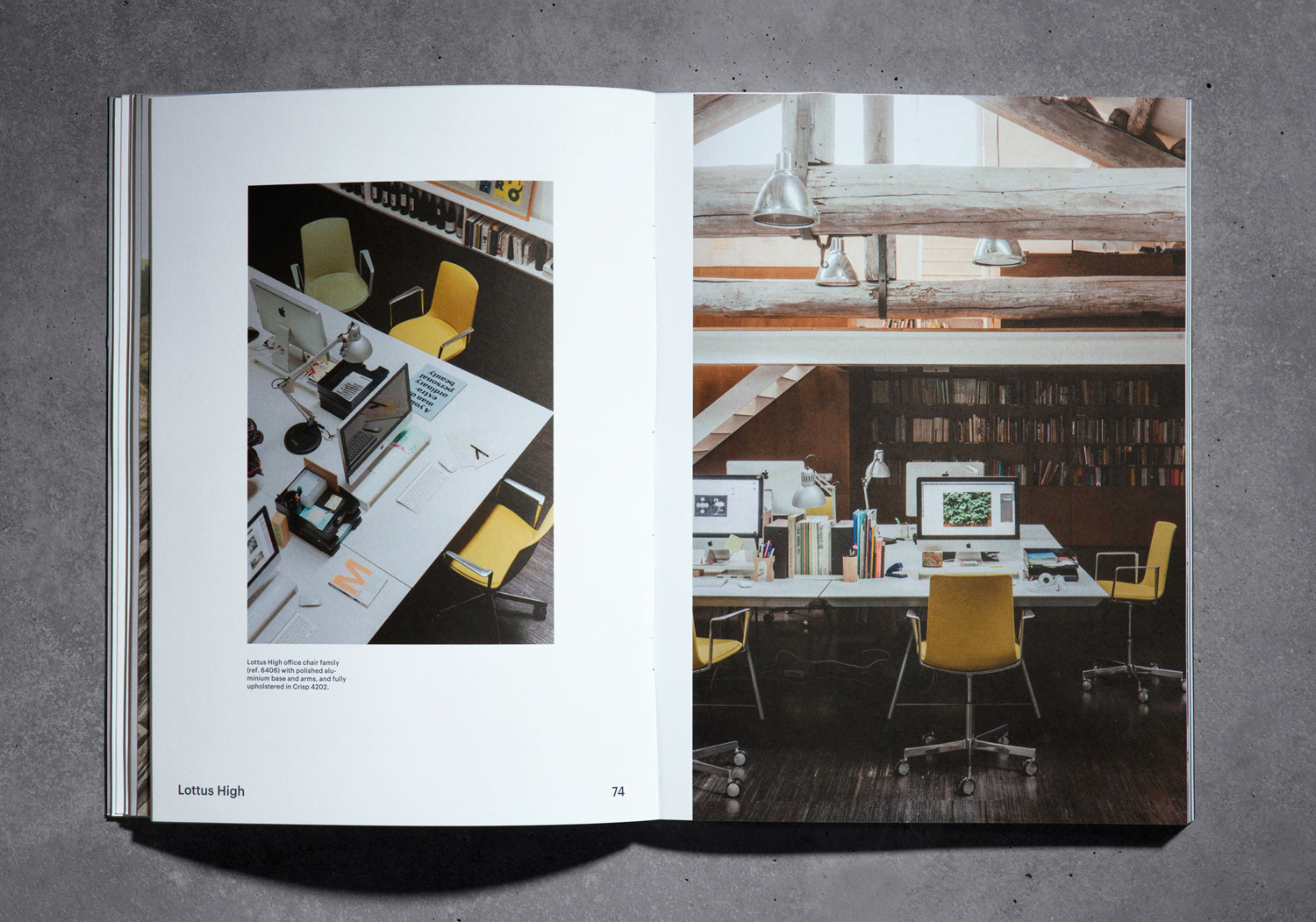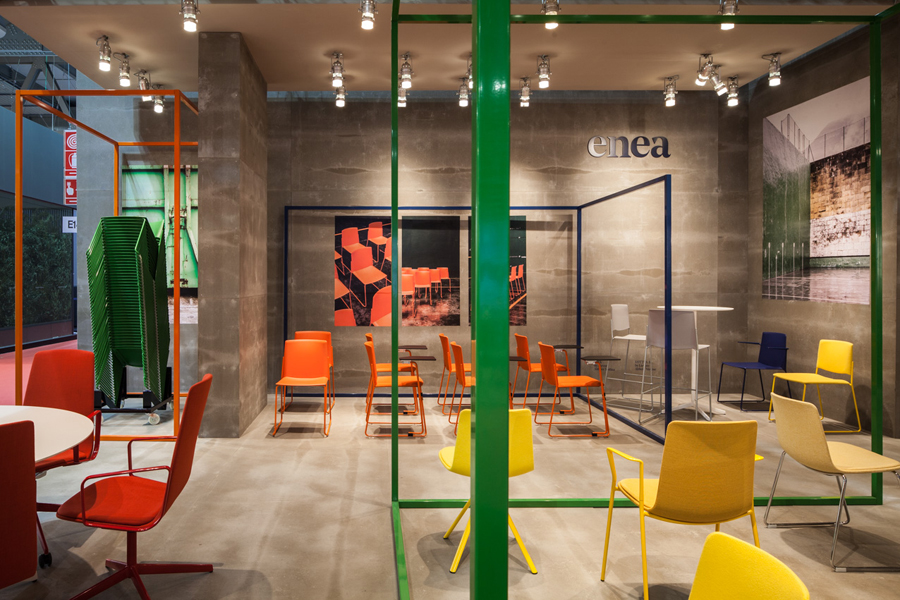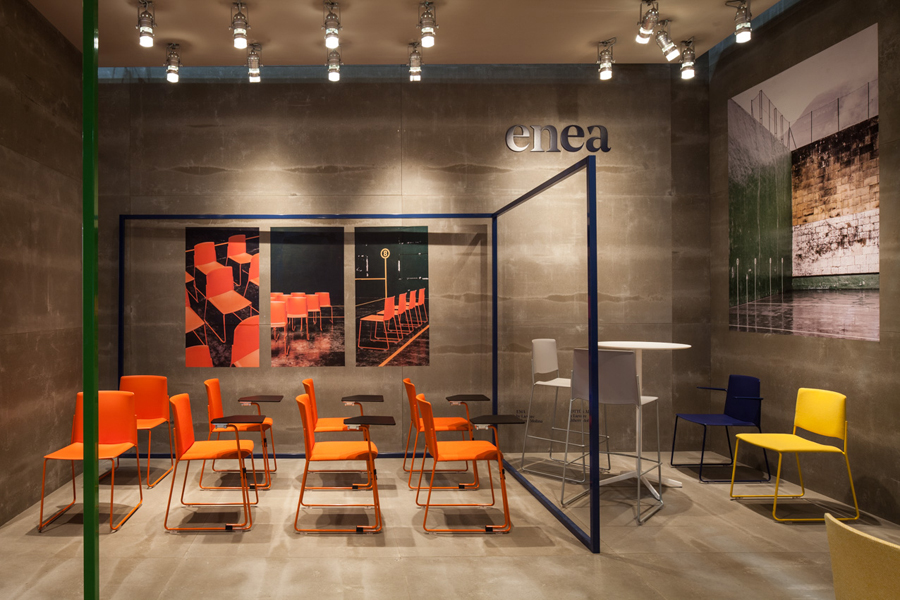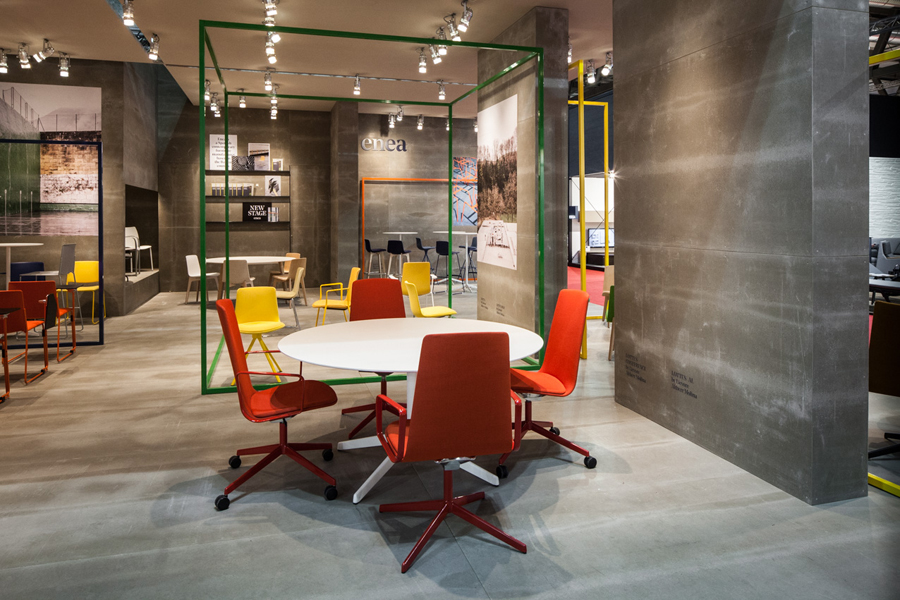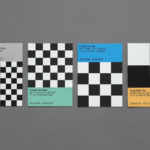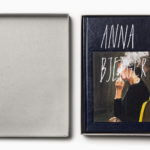Enea by Clase bcn
Opinion by Richard Baird Posted 9 June 2017
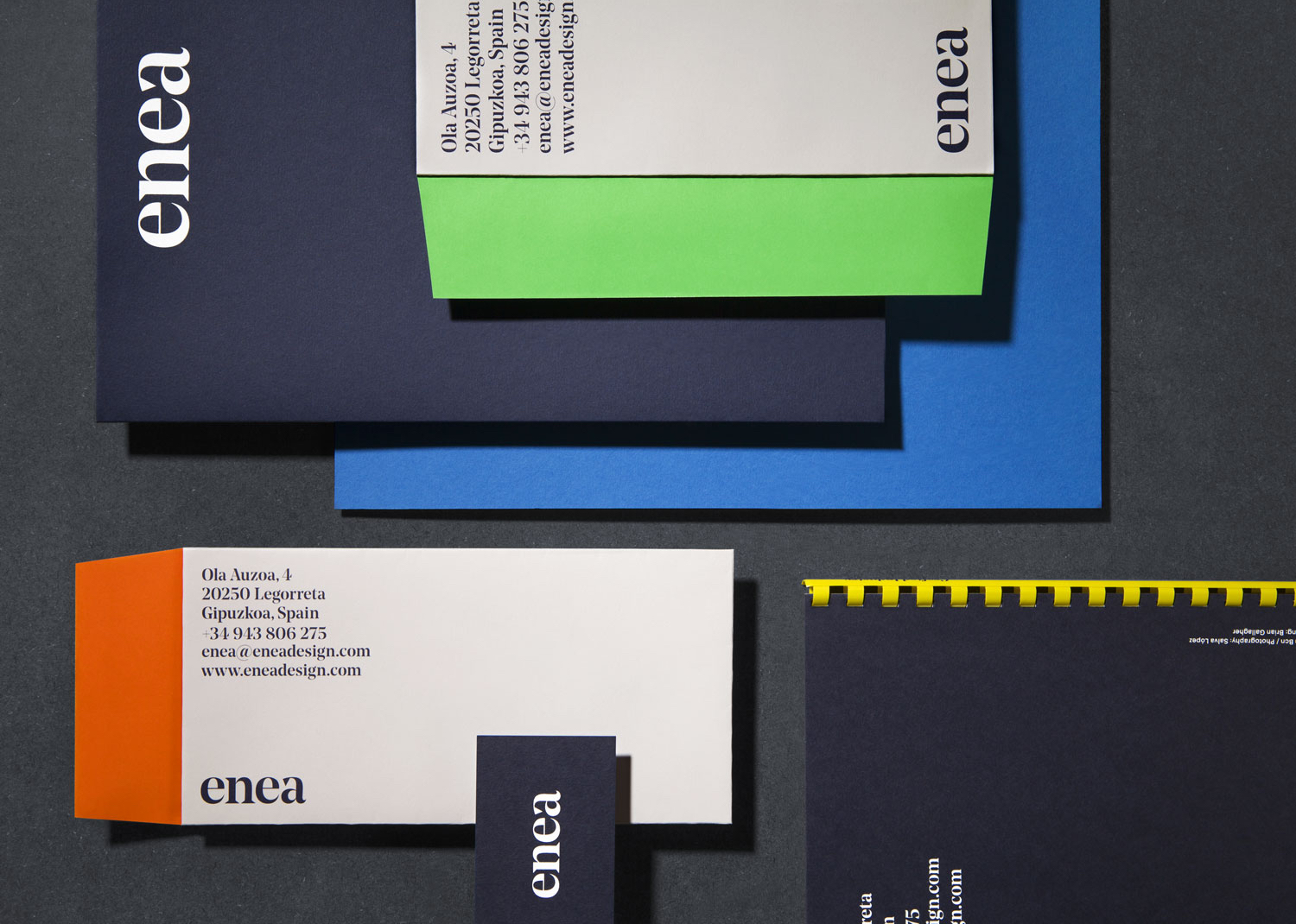
Enea is a contemporary furniture manufacturer, located in Spain’s Basque Country, collaborating with respected designers such as Josep Lluscá, Gabriel Teixidó and the trio Lievore Alhterr Molina. Enea has a distinctive catalogue of versatile, comfortable and durable products, developed for both the private and commercial markets, with unique character in their play with form, colour and texture.
With a desire to differentiate itself from its competitors, and with the intentions of avoiding industry clichés, Enea worked with Barcelona-based graphic design studio Clase bcn to create a new visual identity that would articulate, through image and type, colour and materiality, the company’s Basque origin and unique products in a distinctive and contemporary fashion and, using a striking spartan style, reference industrial manufacturing.
The project extended to business cards, brand guidelines, product brochures and company catalogue, and was launched alongside Enea’s latest range which coincided with the Milan Furniture Fair.
This post, an update to the original from 2015, features all new project images, a more extensive look at art direction, stationery and both product and company brochures, photographed as part of Clase bcn’s new website.
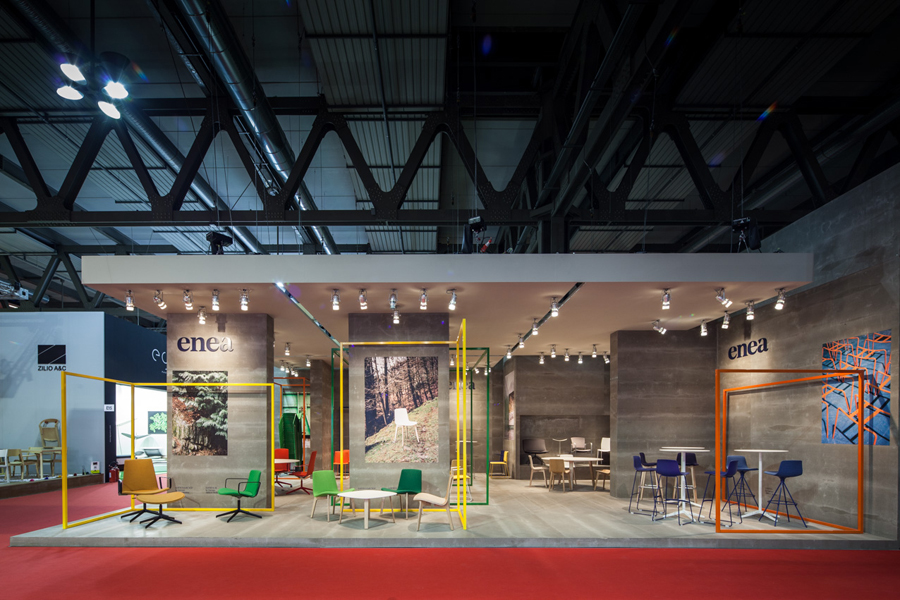
Clase bcn’s visual identity for Enea is a well-balanced mix of tradition and craft, modernity, industry and locality. These are clearly communicated in the design of the logotype and in font choice, the construction of brochure and catalogues, choice of colour and papers, in the contrast of outdoor and industrial image, and the use of concrete and brightly painted frames across Enea’s exhibition stand.
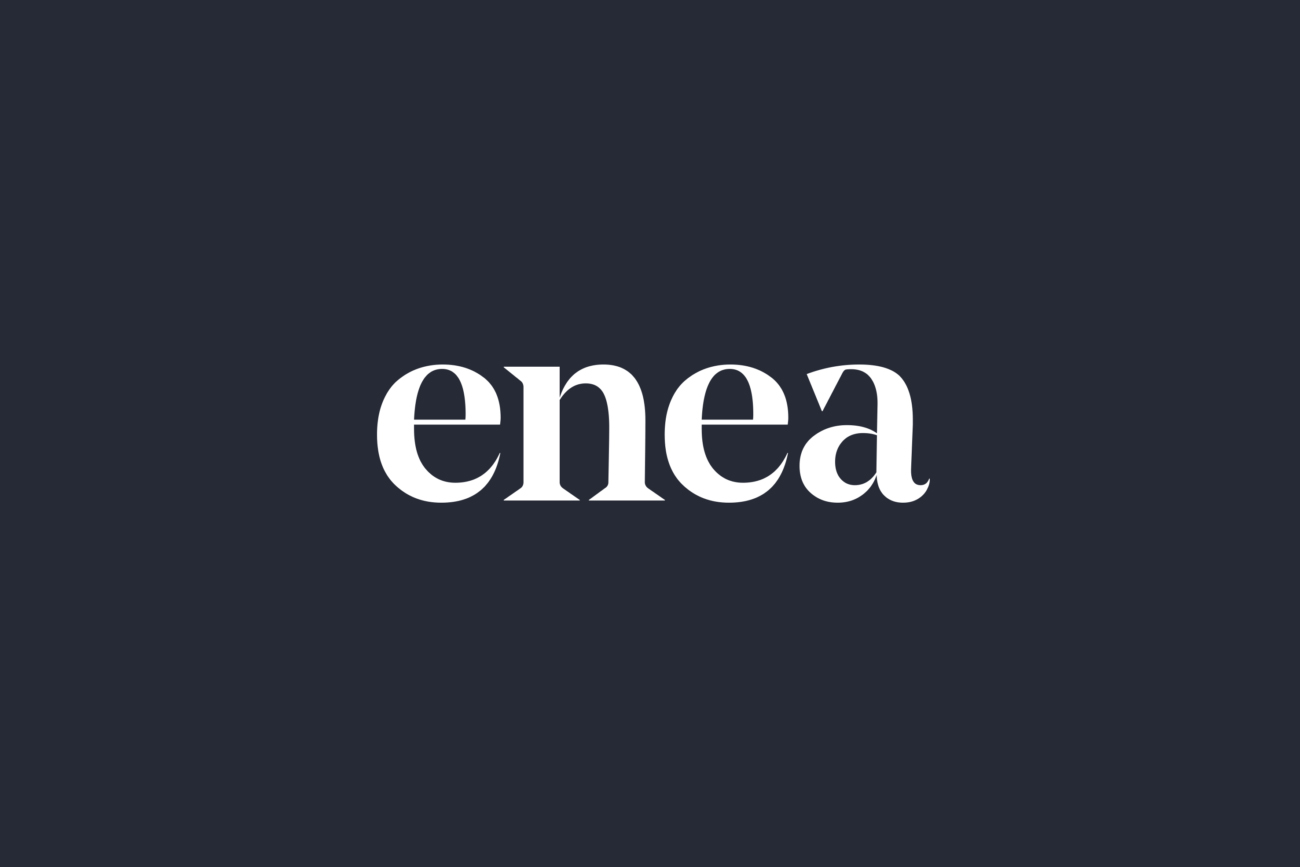
The wedge serifs, stroke-contrast, broad stems, full bowls, sharp terminals and engraved qualities of the logotype, built from Schick Toikka’s Noe Display, set a bold, robust and traditional tone, one of quality construction and resilience. Its lowercase letters and tight kerning softens it slightly with an informal, accessible and more current quality. Its large size in print firmly places craft at the forefront where you might expect the modernistic and reductive to be preferable, securing differentiation and reflecting some of the traditional values that underpin the modern aesthetic of Enea’s range.
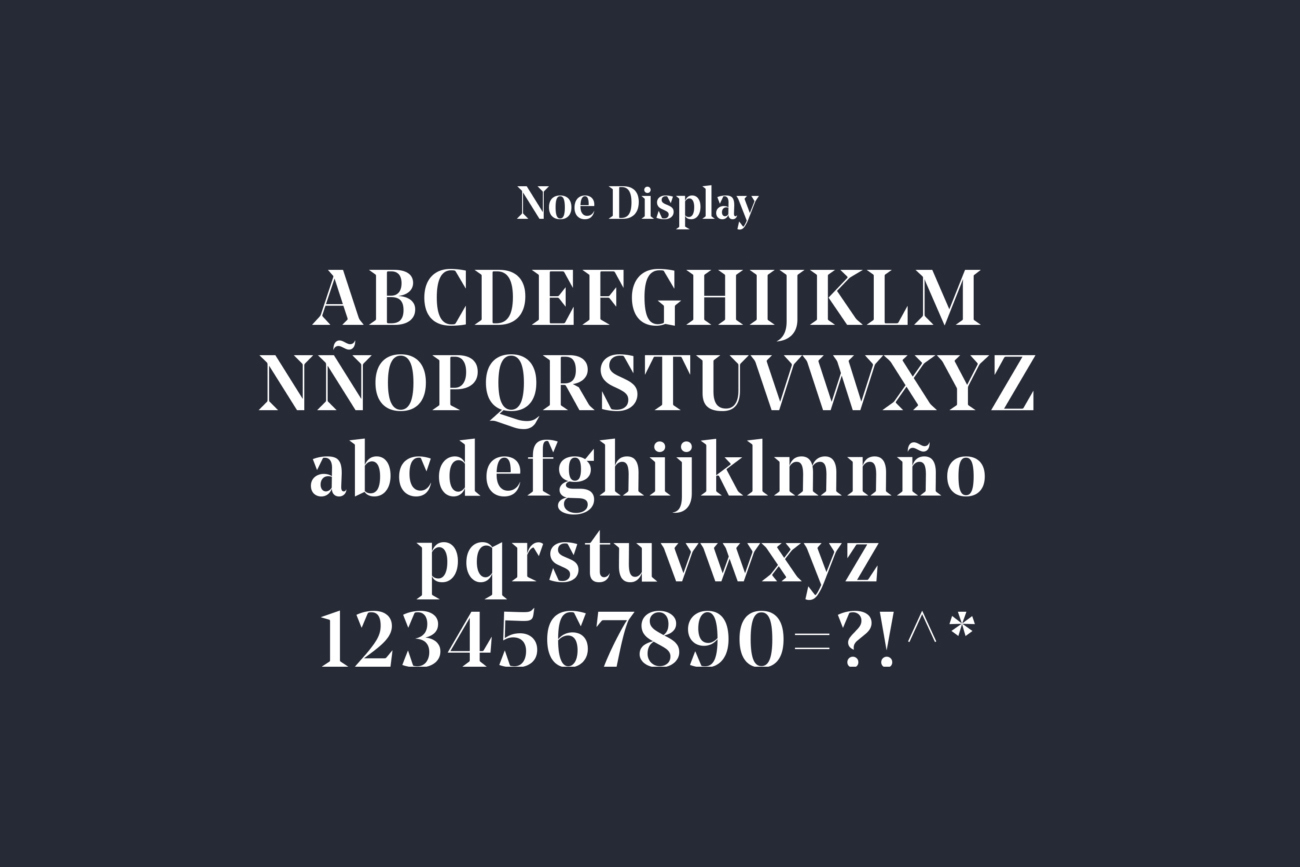
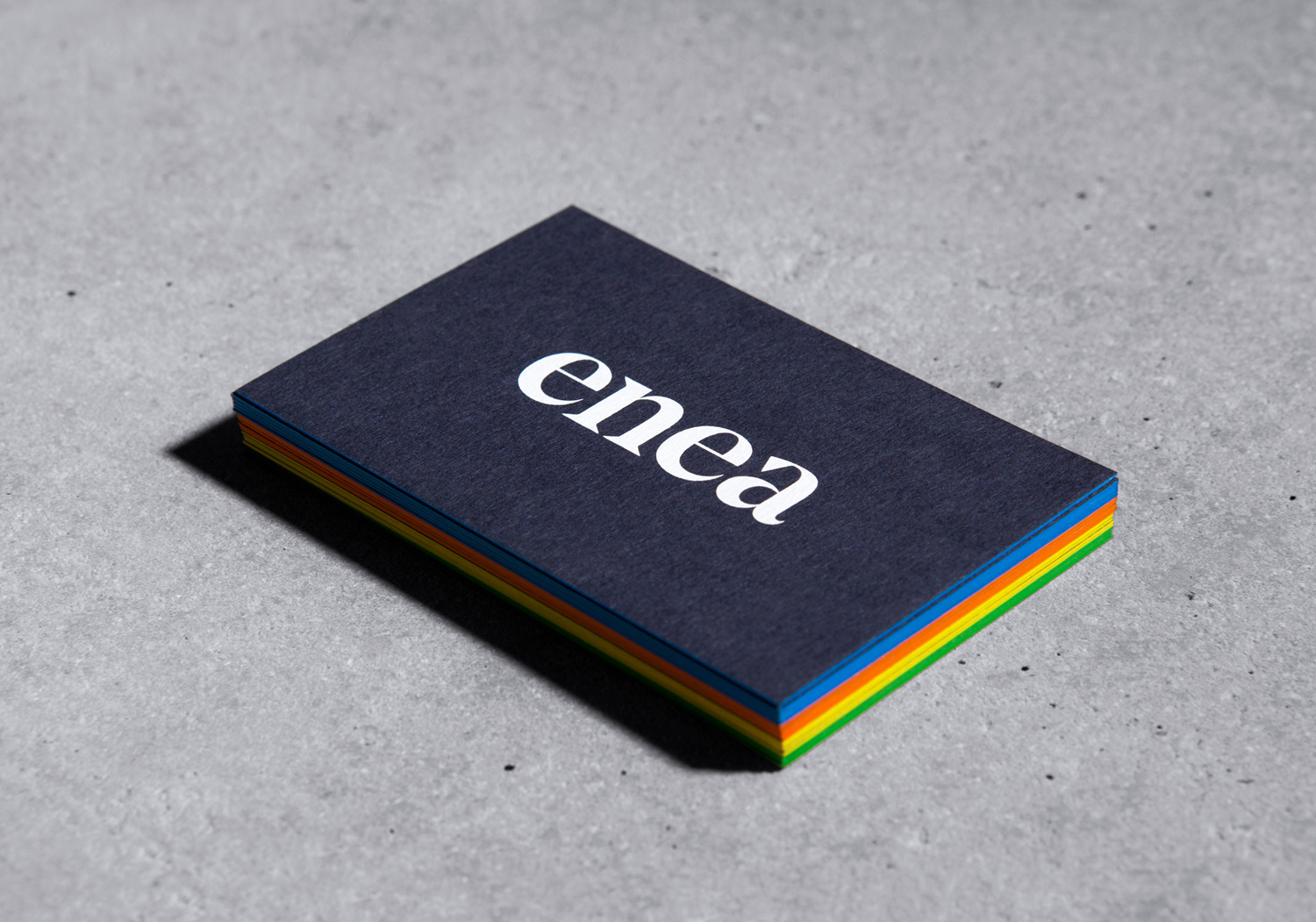
The blue board, white ink and the bright edge painted detail of the business cards appear distinctive. These offer a cheerful and modern contrast to the more traditional qualities of the logotype, and are rooted in the feature furniture of Enea’s catalogue and the colourful pipes, a product of functionality rather than style, that run throughout its factory. The bright edges also make it into the manufacturer’s exhibition stand, cutting through cool concrete surfaces with a contemporary conviviality.
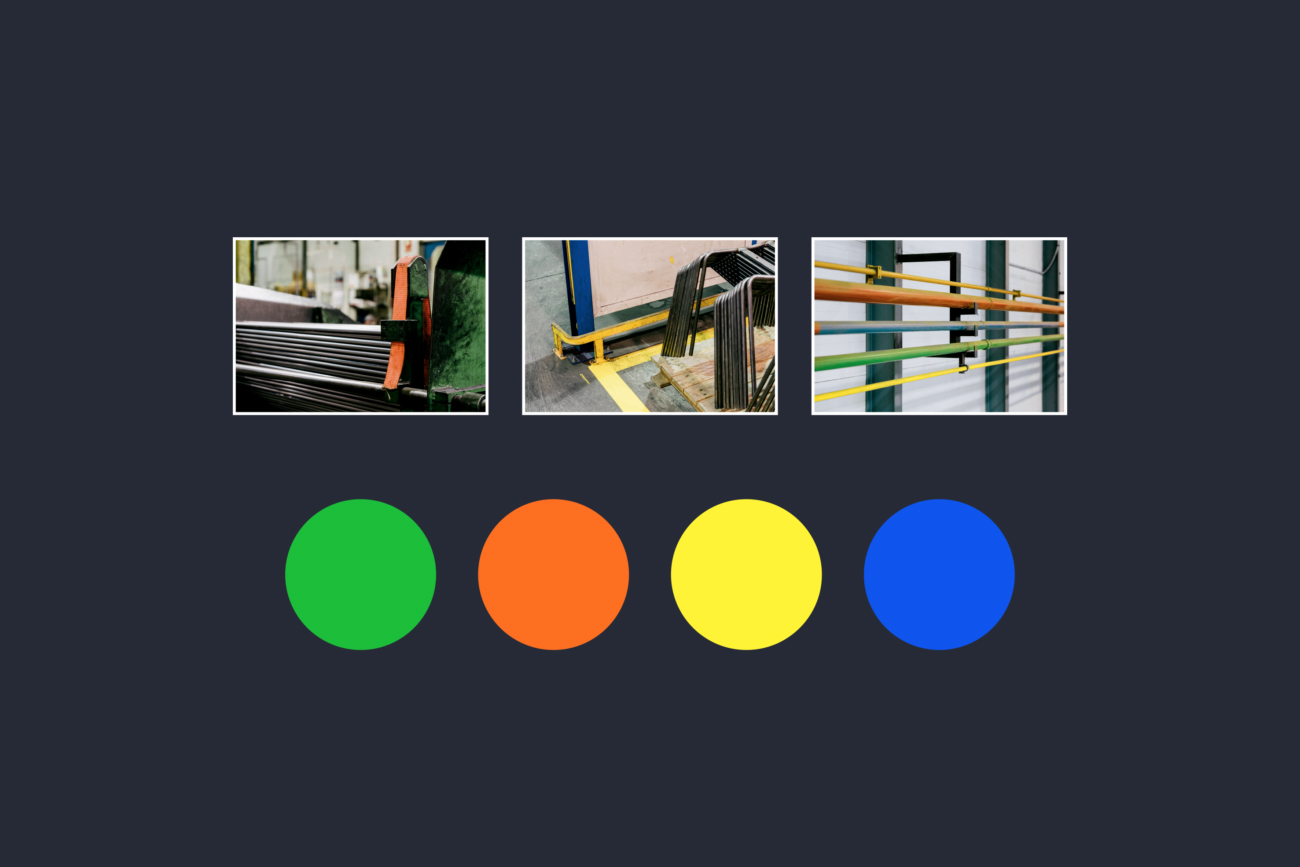
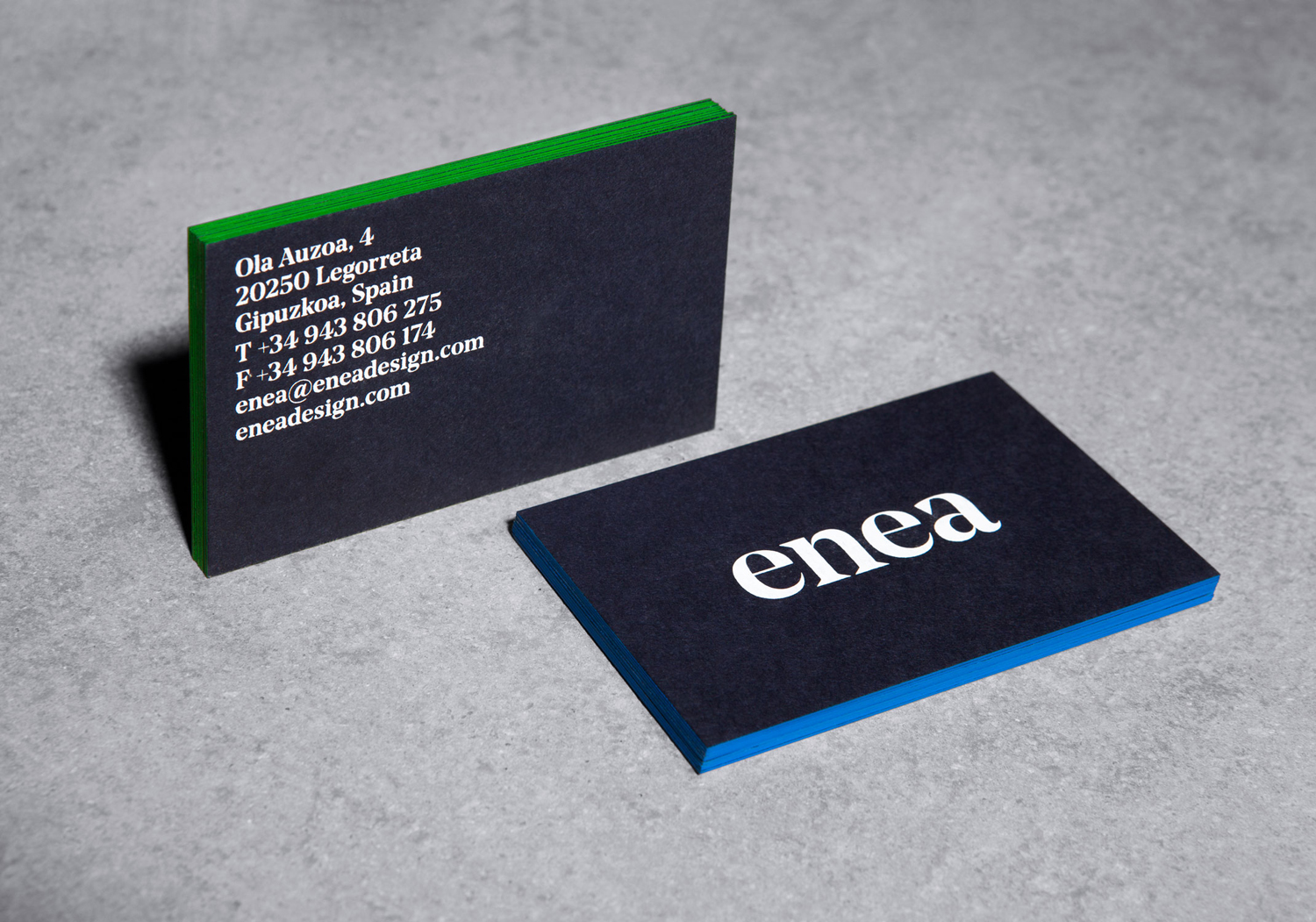
Enea’s company catalogue and product brochures avoid convention and are largely in opposition to the polish of other manufacturers. The low-fi gluing and binding are smalls detail but in many ways make Enea appear smaller, more industrious and personable. The full bleed images, contrast of paper size, large type size, variety of layouts and coloured paper make for a visually interesting piece of print work that touches upon manufacturing, locality and craft values.
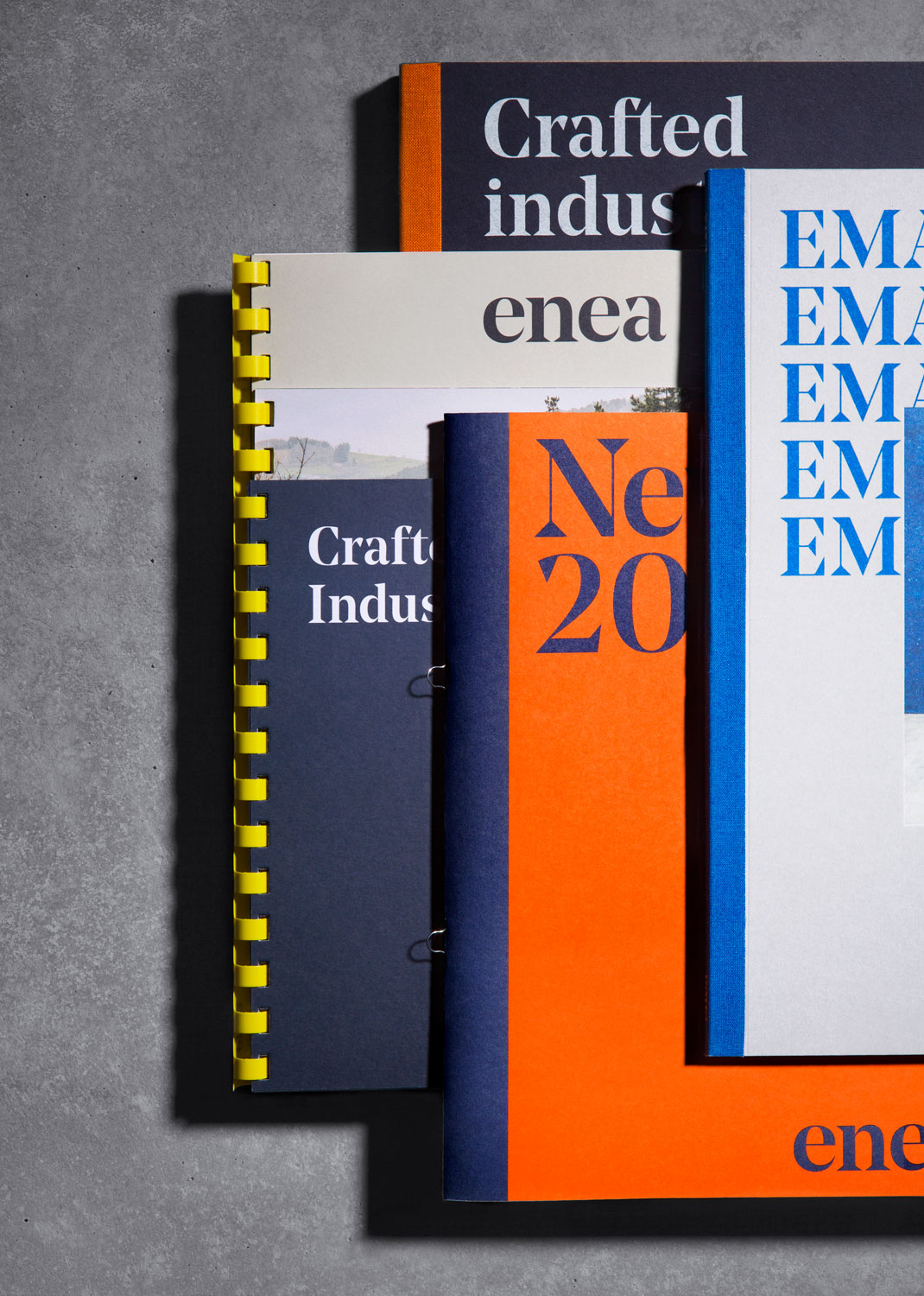
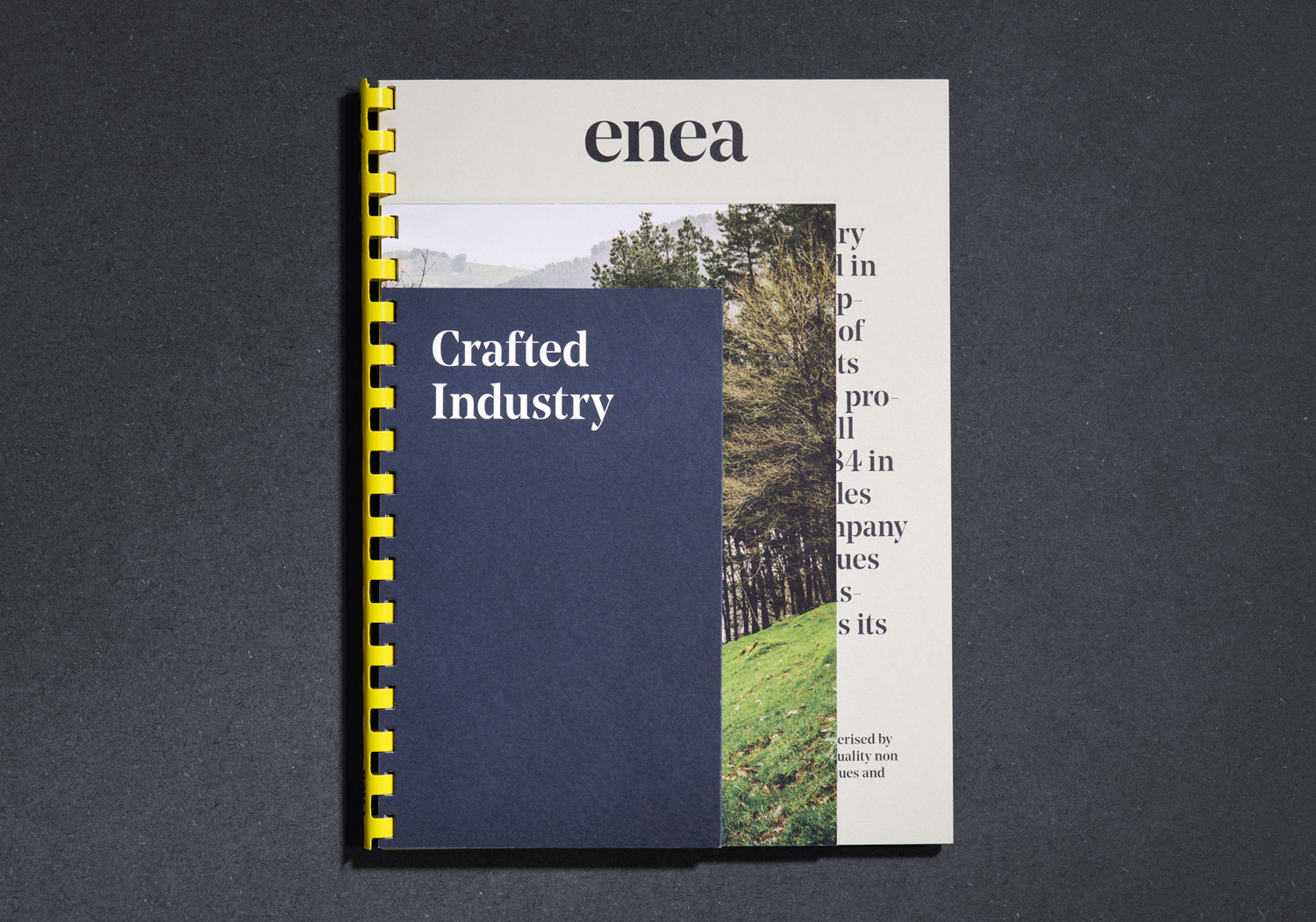
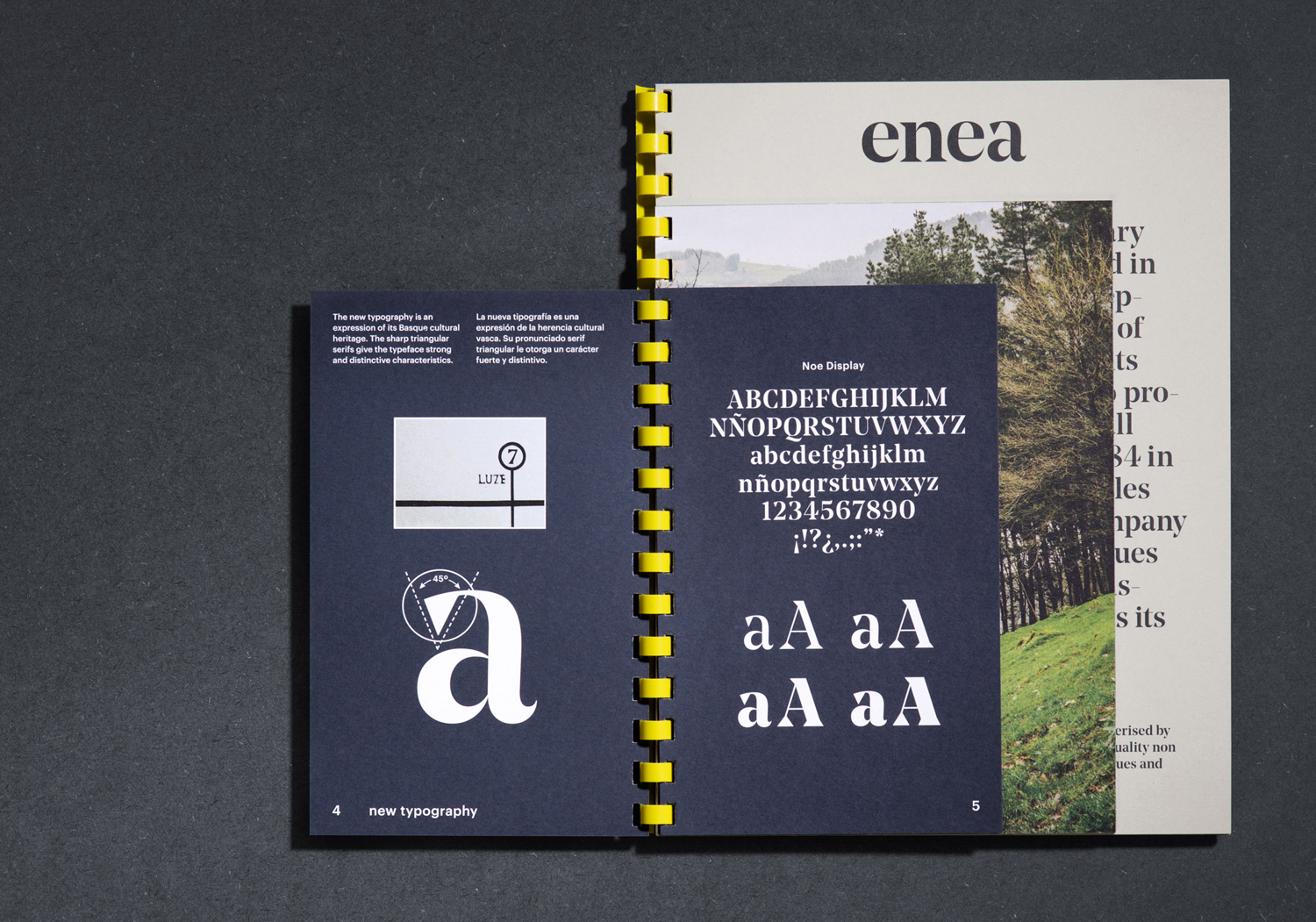
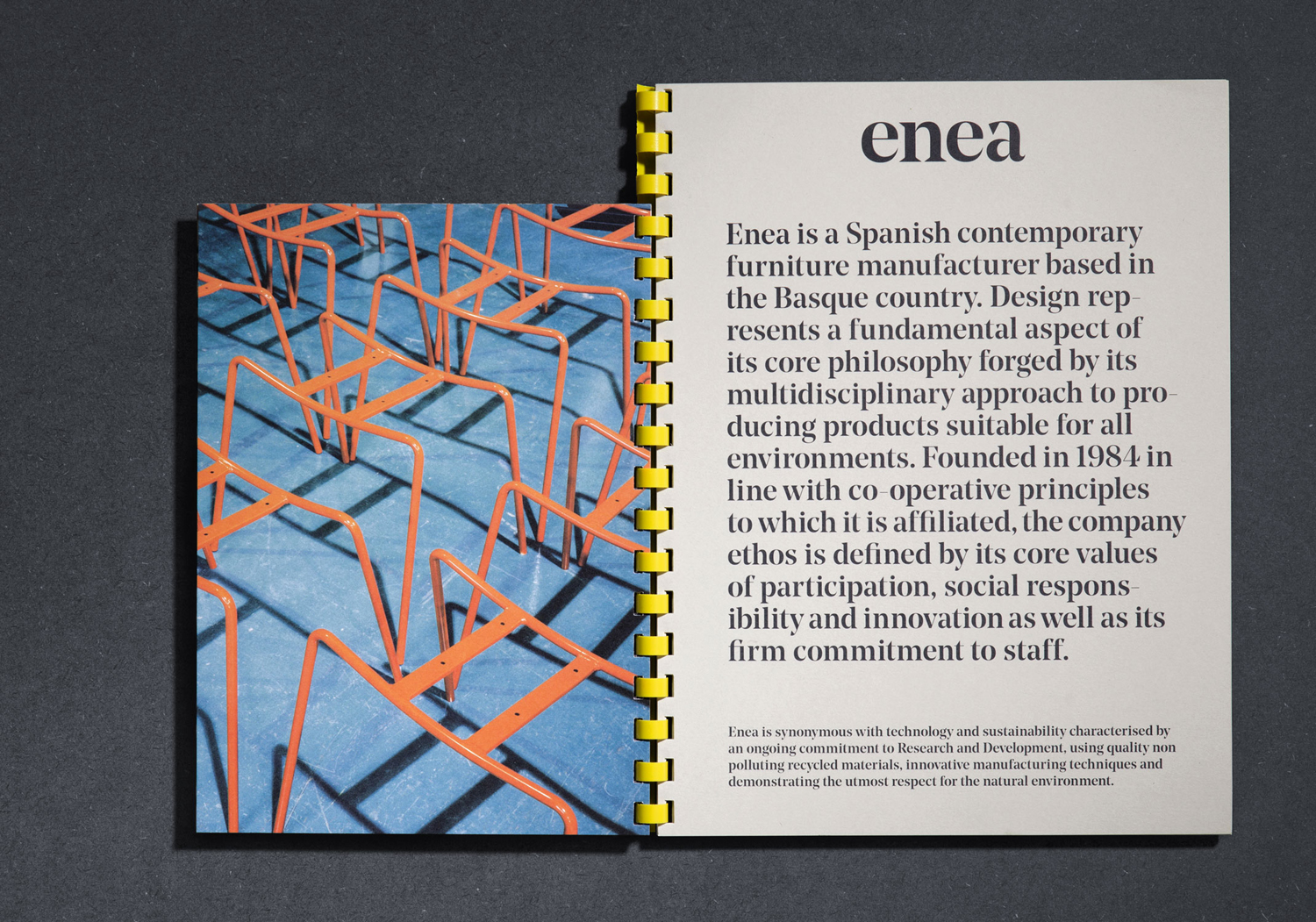
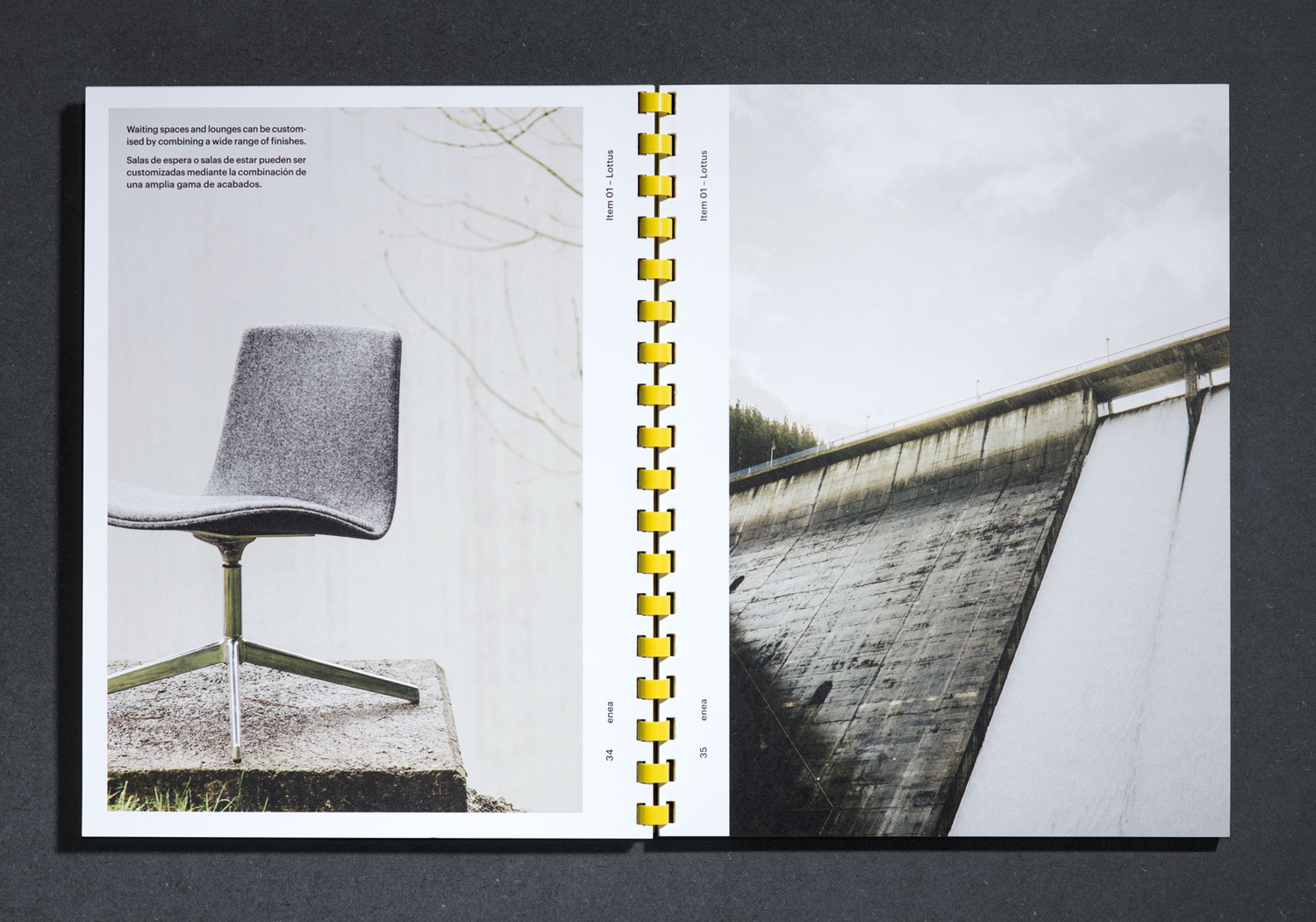
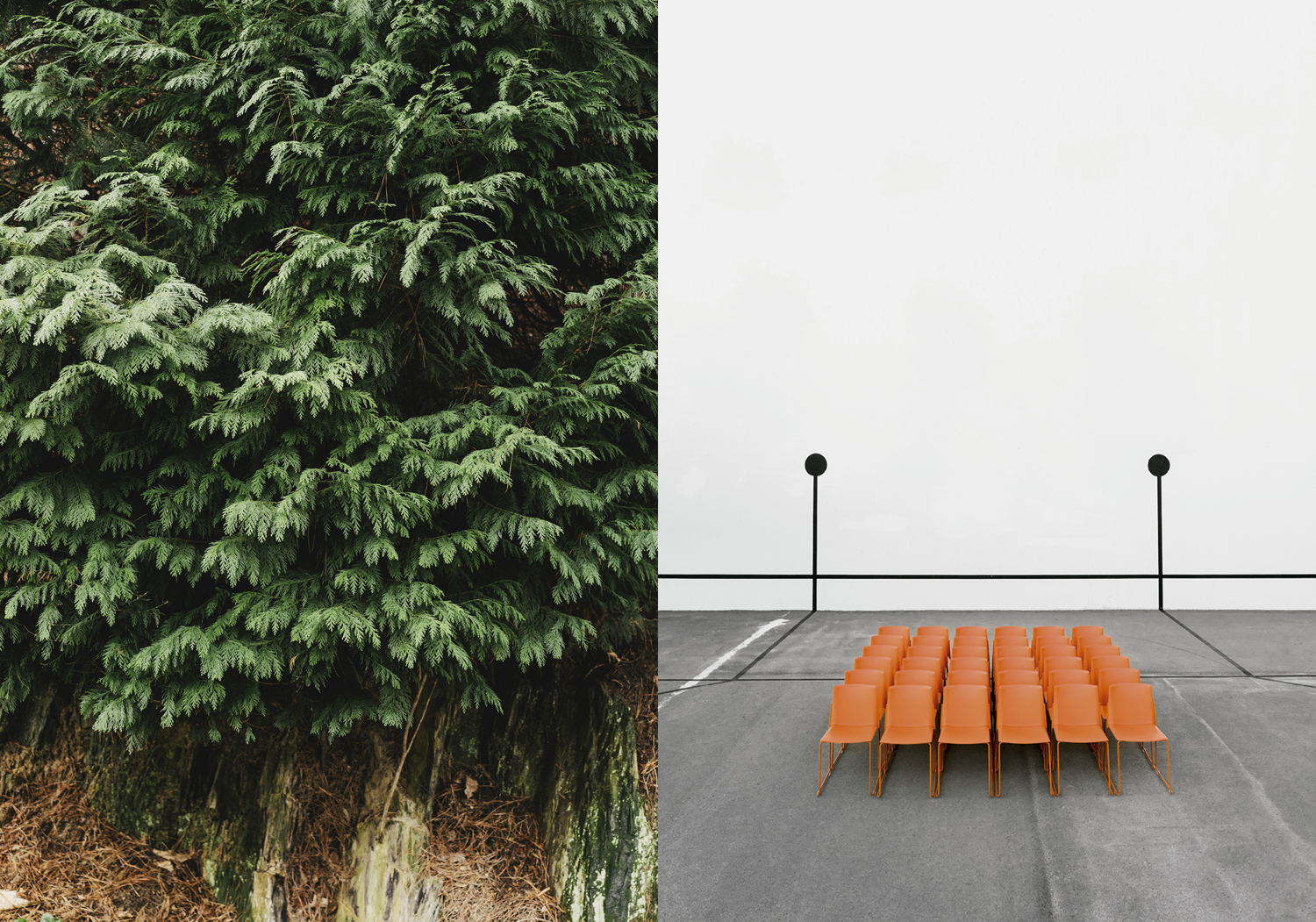
Contrast is used to good effect throughout photography, juxtaposing the earthy colour and texture of Basque Country scenery alongside the geometry, steel, wear and tear of manufacture, as well as moments where furniture and environment intersect and a sense of process. The crops to the images, the focus on form and finish, their tone and the clear use of contrast is unexpected, well-executed and an interesting alternative to the conventions of the industry, often lifestyle-orientated rather than story-driven. This is a particular highlight.
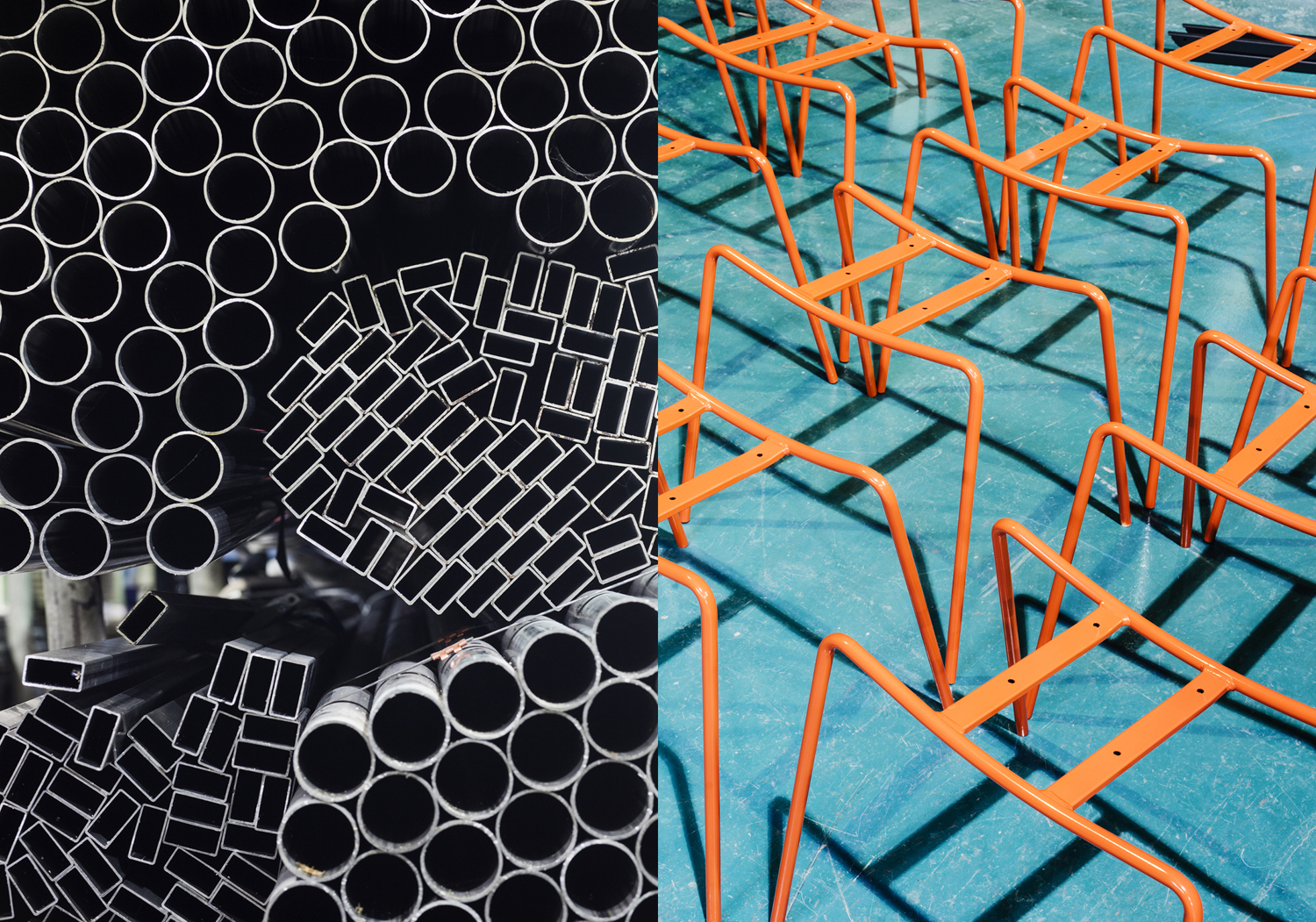
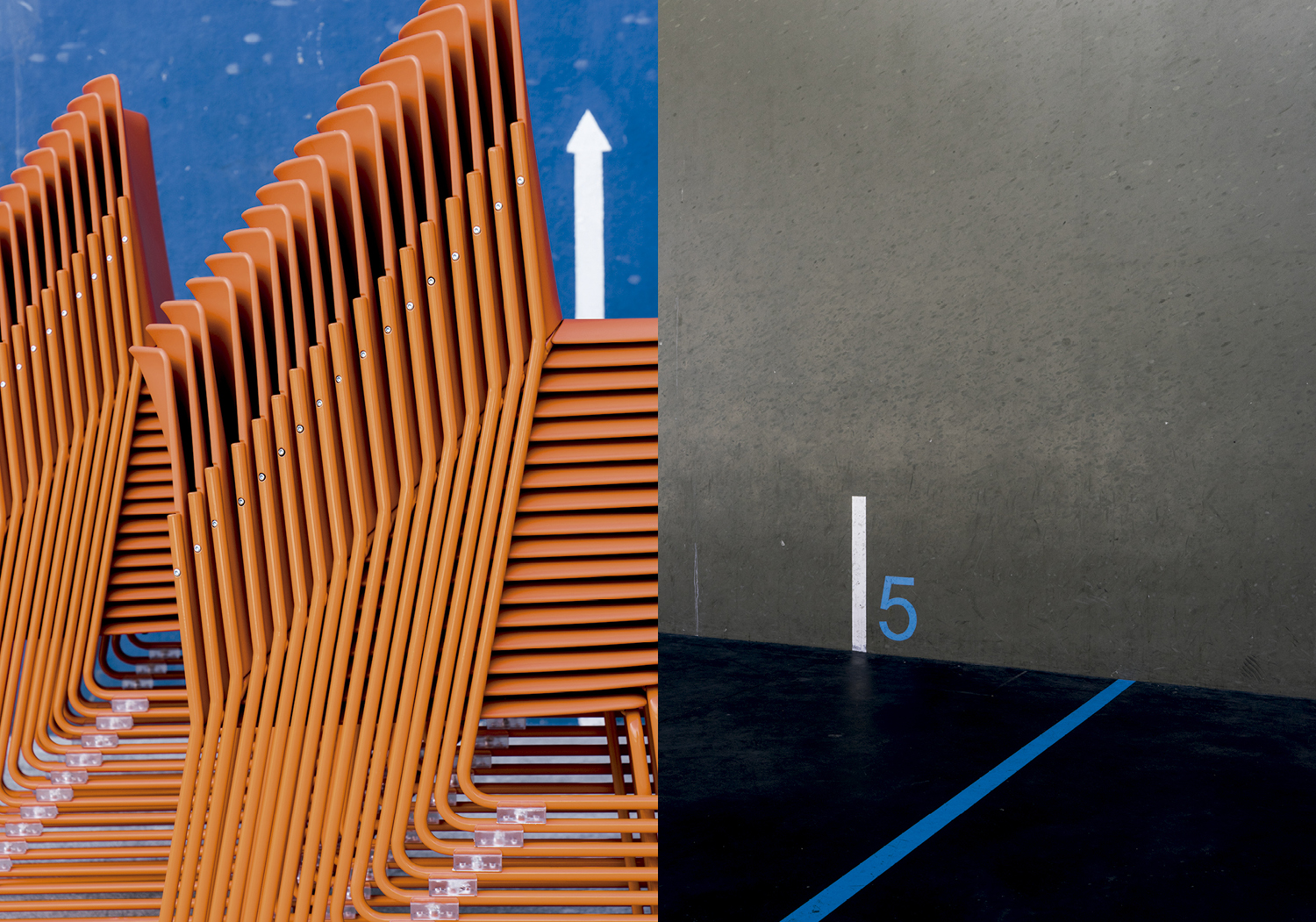
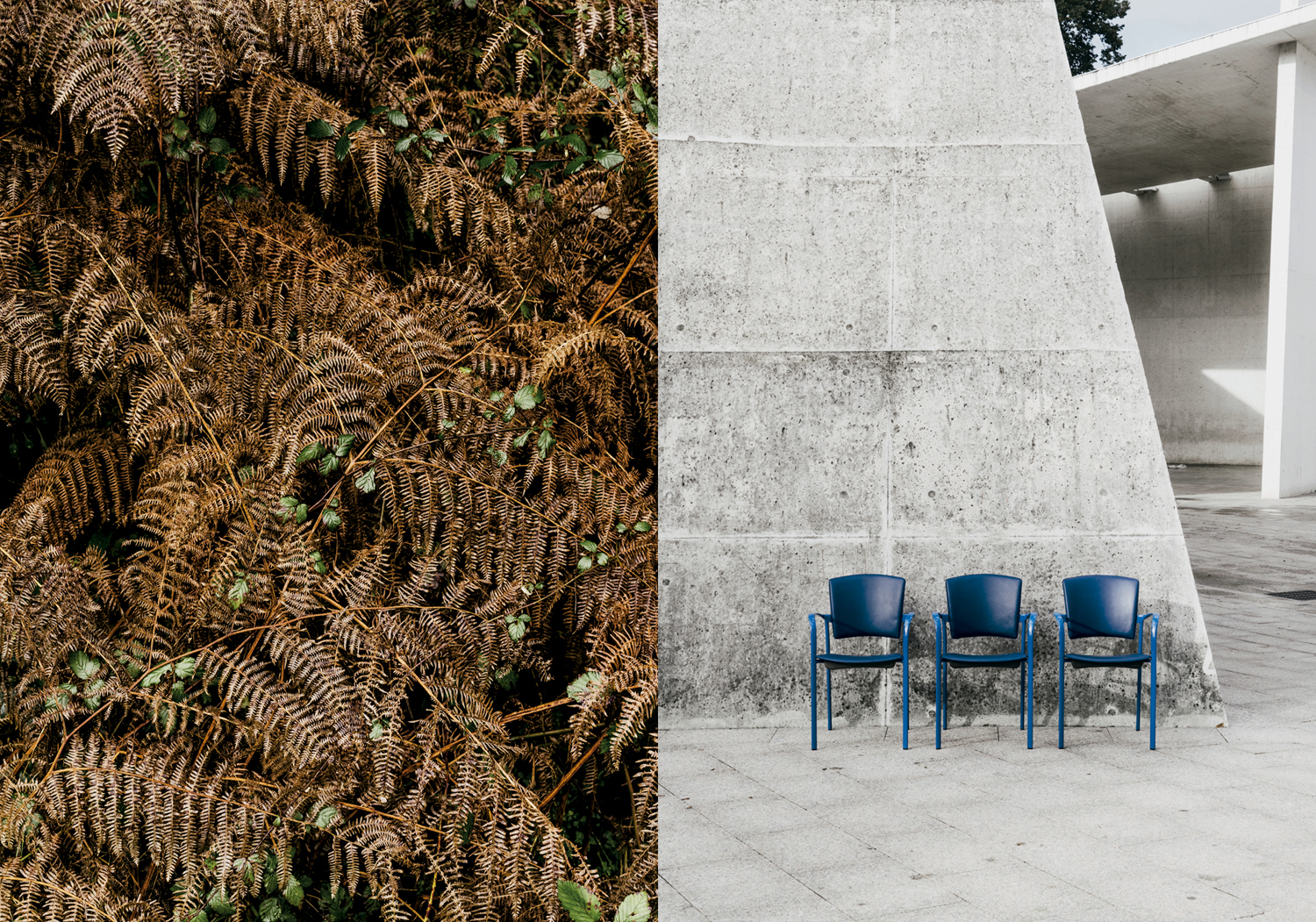
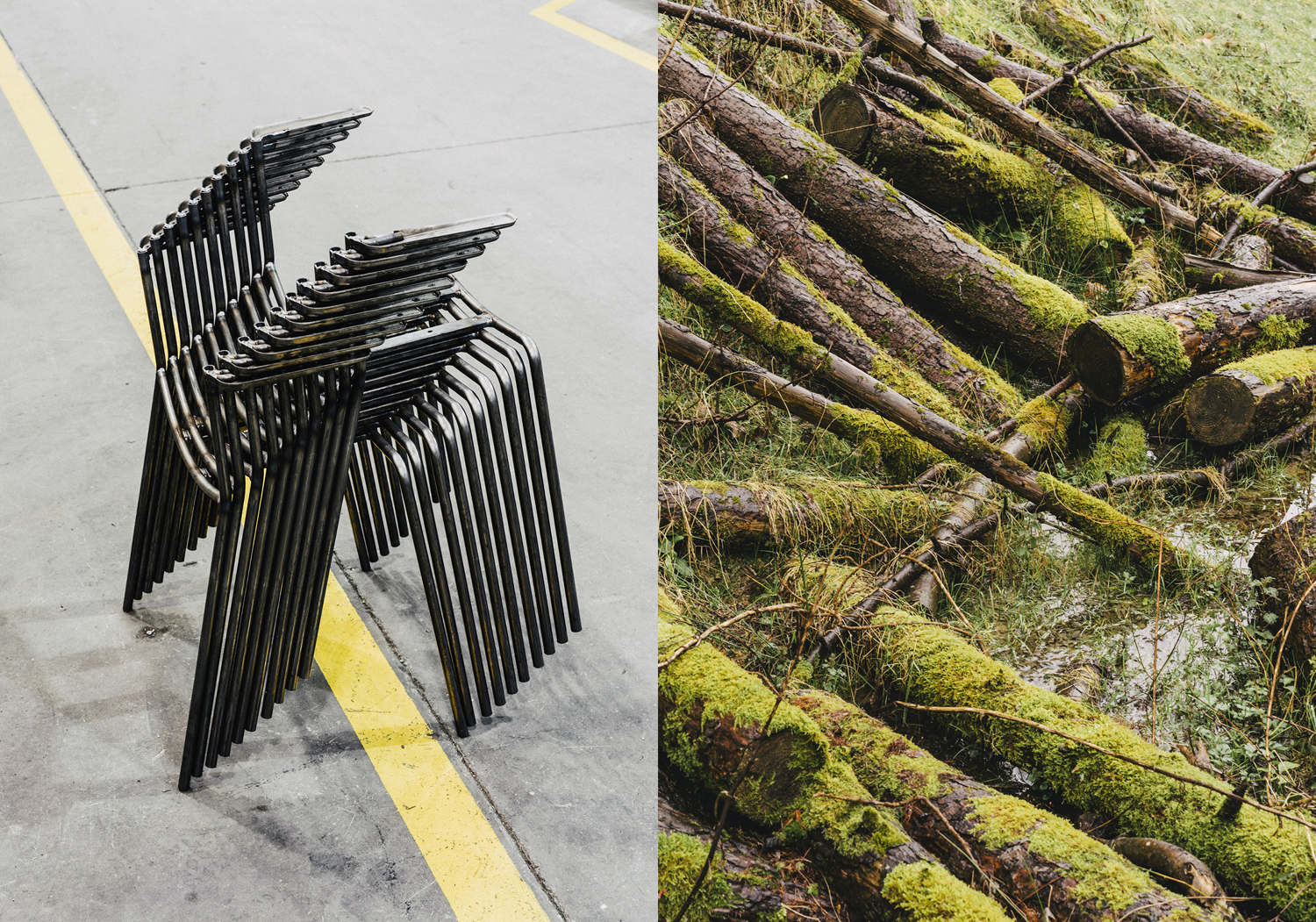
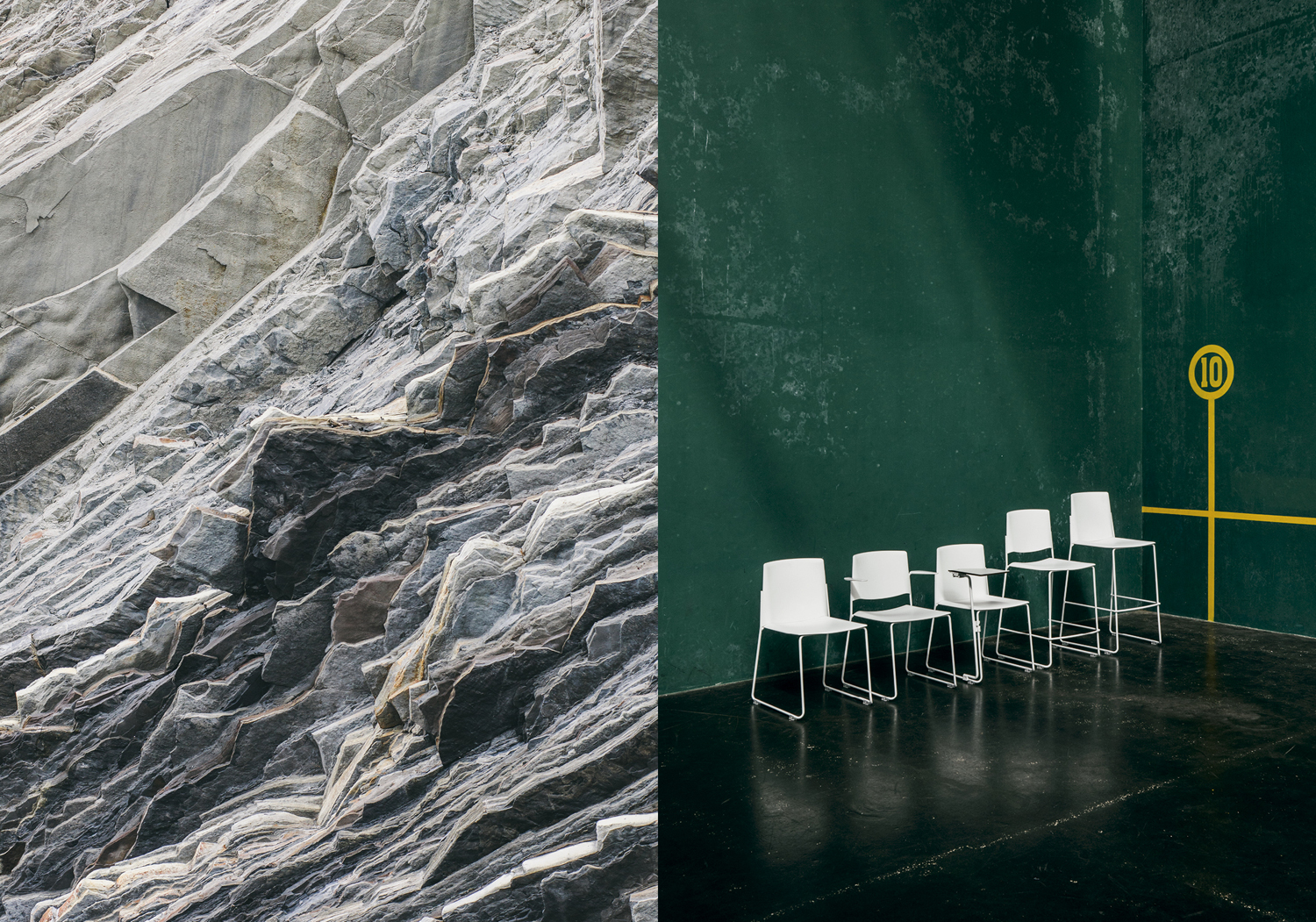
For a large manufacturer with a technologically advanced manufacturing plant the identity doubles down on craft and the small-scale. Website, which in BP&O’s original post in 2015 was described as being oppositional to visual identity in its corporate tone, now falls in line with its own blend of online functionality and emotive storytelling in imagery and language. It is a reminder that while mass-manufactured and modernistic in form, each piece has crafted origins, and influenced by tradition and locality.
Design: Clase bcn. Photography: Salva López. Opinion: Richard Baird. Fonts Used: Noe Display
